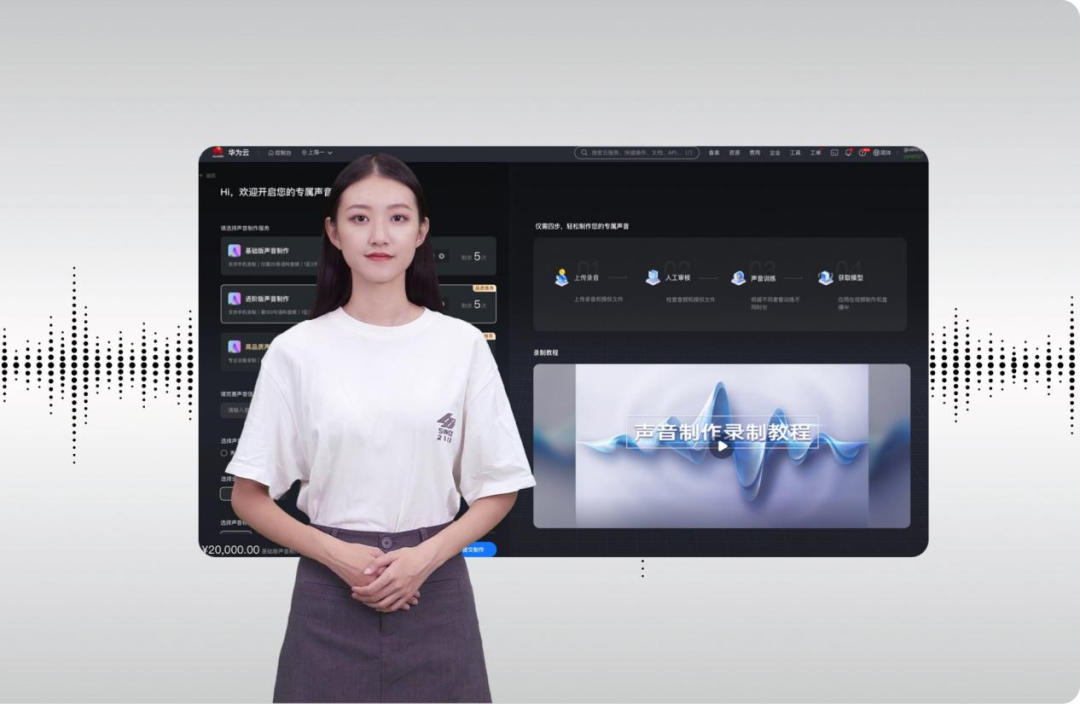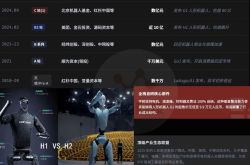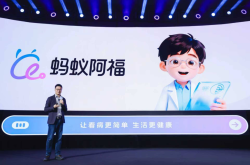Huawei Has Made Its Entry! The Hottest Gold Track in the AI Field: Digital Humans from Tech Giants Kept Me Awake All Night
![]() 09/24 2025
09/24 2025
![]() 484
484
With just a character photo and a voiceover or text, you can instantly generate a high-definition, smooth (1080p/48fps) digital human video lasting up to 1 minute. Yes, Kuaishou's 'Kling AI' recently unveiled a brand-new digital human video generation feature, which is now gradually opening for public beta testing.
This also means that another internet giant has officially entered the AI digital human arena.

Kuaishou is not the only one investing in digital humans. Tech giants like Baidu, JD.com, Douyin, and Huawei have also entered the fray, launching virtual anchors capable of selling products, interacting, and even working 24/7 without breaks. You'll find that digital humans are rapidly 'occupying' e-commerce live streams, short video content, and even quietly becoming the intelligent customer service on your phone.
So, here comes the question: Where does the true value of digital humans lie? Could they become the next gateway for the AI technology boom? Will they make our interactions with machines feel more like 'talking to a person'? Or are they subtly blurring the boundaries between virtual and real, becoming a key step towards future integration?
01 Why Are Tech Giants Scrambling to Deploy AI Digital Humans?
AI digital humans have suddenly become the 'top trend' in the tech world, with almost every major player like Baidu, Kuaishou, JD.com, and Douyin making moves. Behind this, it's not just about following trends.
Let's look at a few viral examples to understand better.
First, let's talk about the 'Luo Yonghao Digital Human' that went viral online. On June 15th this year, Luo Yonghao's digital human made its debut in Baidu Youxuan's live stream, co-hosting with the digital avatar of assistant Zhu Xiaomu. According to Baidu E-commerce's official data, the live stream lasted 7 hours, attracted over 1.3 million viewers, and generated over 55 million yuan in GMV. Notably, one-third of the products sold more than in Luo Yonghao's live stream at the end of May.

Luo Yonghao's digital human live stream. Source: Internet
Moreover, this digital human wasn't just a robotic 'dummy' reciting scripts. It would unexpectedly interrupt its partner, proactively initiate raffles and giveaways, and occasionally urge viewers to spam '666,' perfectly replicating Luo Yonghao's humor and ability to engage with jokes. All of this was powered by a large model: during the live stream, the AI called the knowledge base 13,000 times and automatically generated 97,000 words of product explanations. This output capability is likely unmatched by human anchors.
Let's talk about another breakthrough—AI singer Yuri.
In June this year, this 'virtual girl' with blue-streaked hair and a skull-adorned microphone suddenly went viral. She's not a real person but the first AI singer created by the AI.Talk program under the Hanqing Studio. Her debut single, 'SURREAL,' composed, arranged, performed, and visualized entirely by AI, became an instant hit, amassing over 7 million plays and topping charts in Japan, North America, and beyond.
Yuri even took the stage at a major event like the Bund Summit, delivering a speech with poise and eloquence, completely shattering the stereotype that 'virtual humans lack humanity.'

Excerpts from Yuri's speech at the Bund Summit. Source: Bilibili
It's clear that by 2025, AI digital humans are experiencing three major breakthroughs: First, interactive capabilities have significantly upgraded, enabling not just smooth responses but also engaging interactions; second, costs have drastically decreased, with JD.com's digital human live streaming costing just one-tenth of human anchors, averaging less than 100 yuan per day; third, applicability is expanding rapidly, from e-commerce sales to short dramas, music, and speeches, covering a wide range of fields.
Today's digital humans are no longer just 'humanoid PowerPoints.' Powered by large models, they can create, understand users, and even exhibit emotions, often outperforming humans in efficiency.
In short: AI digital humans are no longer just 'tech gimmicks.' They are genuinely transforming live streaming, content creation, and even interpersonal interactions. Whoever seizes the high ground first may reap the next wave of AI dividends.
02 A Fierce Competition: Baidu, JD.com, ByteDance, and Huawei Have Made Significant Investments
According to IDC predictions, by 2026, the Chinese AI digital human market will exceed 10 billion yuan, reaching 10.24 billion yuan. iiMedia Research also shows that by 2025, the core market and related industries driven by digital humans in China are expected to reach 48.06 billion yuan and 640.27 billion yuan, respectively—both double the figures from 2023. Clearly, digital humans have become one of the hottest gold tracks in the AI field.
Faced with such a rapidly growing and lucrative market, nearly every internet giant has 'deployed heavy forces,' each adopting unique strategies:
Baidu: Creating Highly Persuasive Digital Humans
Baidu has an early and deep layout (investment) in the digital human field. Baidu founder Robin Li has personally experienced Baidu's digital human-related technologies and expressed confidence in the business line. At the Baidu Create conference in April this year, he stated, 'One of the most exciting breakthrough applications in 2025 will be AI digital humans.'
This confidence is not just in slogans but also reflected in actual performance. Baidu founder Robin Li disclosed during the Q2 earnings call that revenue generated by digital humans in Q2 increased by 55% quarter-over-quarter, amounting to approximately 500 million yuan based on calculations from the call.
Meanwhile, Baidu has launched the 'Mengdie Plan' and 'Fanxing Plan.' The Mengdie Plan aims to double the number of top anchors on Baidu Youxuan through the creation of super-anchor digital humans and support in traffic and budget.

The Fanxing Plan will add another 100,000 free Huiboxing digital humans, invest 100 million yuan in digital human consumption subsidies, and provide tens of millions of yuan in operational support to help more ordinary individuals and small and medium-sized enterprises start live streaming with digital humans.

JD.com: Cost-Effective and Efficient Product Sales, the 'Ultimate Substitute' for Human Anchors
E-commerce giant JD.com is also fully investing in virtual digital humans. It's reported that JD.com trialed digital human live streaming during the 2024 Spring Festival, with its Yanxi digital human generating over 40 million yuan in GMV during the holiday period.
During this year's '618' shopping festival, JD.com's digital human live streaming achieved 'high commercial viability.' The cost of digital human live streaming is just one-tenth of human anchors, enabling 24/7 broadcasting, increasing live room conversion rates by 30%, and outperforming over 80% of human anchors.
During 618, JD.com also launched six industry-specific digital humans, including Cyber Pioneer, National Style Expert, Sports Girl, Mature handsome guy (Mature Male), Youthful Male Student, and Office Lady, tailored to different merchant categories and offered free to JD.com merchants.

ByteDance: Giving Digital Humans a 'Soul'
ByteDance's digital human team has introduced the highly anticipated OmniHuman-1.5, an upgraded version of its predecessor, OmniHuman-1. This new multimodal digital human solution has once again sparked a wave of enthusiasm in the AI video generation field.
OmniHuman-1.5 generates highly realistic dynamic videos by combining a single image and audio input, enhancing motion coordination and expressiveness while introducing several groundbreaking features. It can be widely applied in film and television, virtual anchors, education, advertising, and other fields, making digital humans increasingly 'human-like.'

Demo generated by ByteDance's OmniHuman-1.5. Source: Internet
Huawei: One-Stop Digital Human 'Cloud Factory'
Leveraging technologies like the Pangu large model, media audio and video, and collaborative office tools, Huawei Cloud MetaStudio offers cloud services for digital human image training, voice cloning, video production, live streaming, and intelligent interactions. Developers can quickly build end-to-end industry solutions by integrating APIs/SDKs and combining them with their own scenarios. With just a single photo or 3-5 minutes of real-person audio and video, MetaStudio can generate highly realistic digital humans with appearances and voices nearly identical to real people.
Additionally, Huawei Cloud's digital humans have achieved multi-scenario applications in finance, healthcare, cultural tourism, and other industries.

Besides these, AI companies like Tencent, SenseTime, and Zuiyi Technology are also actively investing in this arena, driving digital humans into more application scenarios. It can be said that whoever masters digital humans may secure another ticket to the AI era.
03 Conclusion
From e-commerce live streaming to short drama creation, from virtual idols to industry services, digital humans are simultaneously pushing open the doors to application across multiple dimensions. They represent not only a typical scenario for the large-scale implementation of AI technology but also a profound exploration of humanity's integration with virtual and real worlds.
No one can definitively predict the endpoint, but one thing is certain: This just-beginning digital human wave will ultimately redefine human-machine relationships, content forms, and the digital existence of every ordinary person.
By Vivi
(All images not labeled with sources are from the internet)







